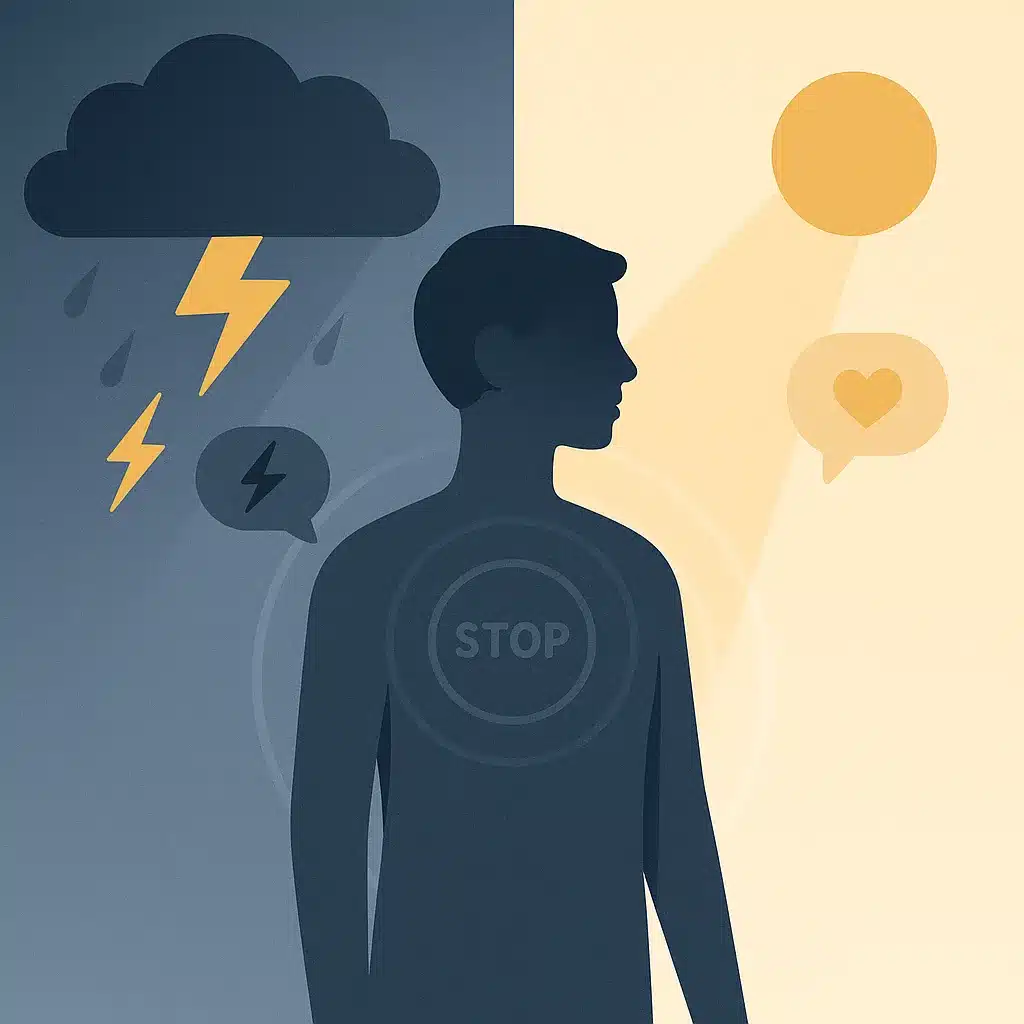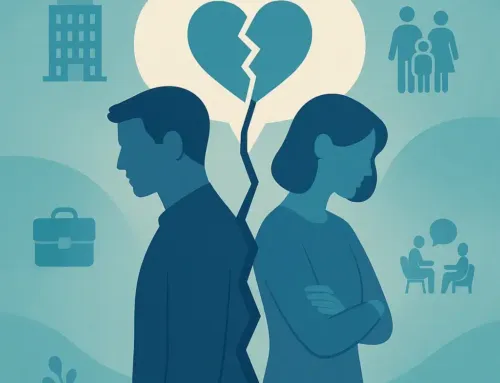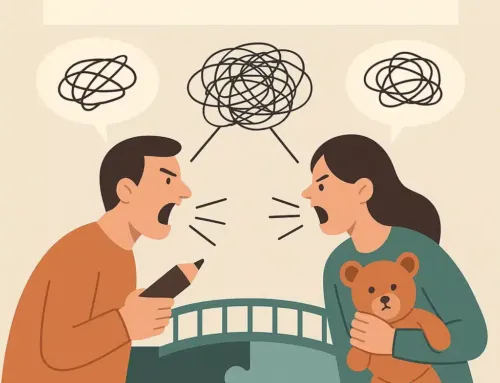
Approx. read time: 8.8 min.
Post: Annihilate Unwarranted Anger: 12 Smarter Responses
Unwarranted anger is a storm that hits you even when you didn’t summon the clouds. Someone snaps, sulks, or dumps emotional weight on your shoulders—not because of anything you did, but because of what they’re carrying. It’s misdirected. It isn’t fair. Yet you still have to deal with it. And how we deal with it often follows patterns shaped by gender, upbringing, and social expectations.
This guide shows how men and women typically respond, why those patterns exist, and how anyone can choose healthier, stronger ways to respond—without absorbing someone else’s storm.
🔎 Unwarranted Anger: What It Really Is
When anger lands on you that you didn’t earn, it’s often displaced or misdirected anger—pressure from stress, hurt, fear, or powerlessness that bursts out at a safer target (you). That doesn’t excuse the behavior, but it reframes it so you can say: This isn’t mine to carry. Psychologists note that while anger is a normal emotion, uncontrolled or misplaced anger becomes problematic and calls for skills that regulate it rather than fuel it. APA+1
Common hidden drivers:
-
Chronic stress or burnout
-
Unprocessed grief or trauma
-
Shame, insecurity, or fear of failure
-
Feeling powerless with a boss, system, or situation—then “venting sideways” at someone safer
🧭 Quick Signs the Anger Isn’t About You
-
The intensity is disproportionate to the trigger.
-
The story keeps shifting; facts don’t line up.
-
You’re blamed for things beyond your control.
-
You’re the “safest” person in the room to unload on.
-
Calm, specific questions make the other person more agitated.
These aren’t rules—just red flags that help you pause and choose a better response.
🧔 How Men Often Respond (and Why)-Unwarranted Anger
Every person is different, but certain patterns show up enough to notice—often because boys and men are socialized to be tough, self-sufficient, and solution-oriented.
-
Shutting Down. Silence or withdrawal can feel safer than “getting emotional.”
-
Matching Anger with Anger. When cornered unfairly, anger can spike as a shield for vulnerability.
-
Logical Deflection. Pivoting to facts, fixing, or debating helps some men avoid messy emotions.
-
Avoidance. Walking away or ghosting prevents escalation—but can also delay resolution.
What this costs: unresolved issues, partners who feel unheard, and an inner backlog of tension.
👩 How Women Often Respond (and Why)-Unwarranted Anger
Women are frequently socialized as emotional caretakers, rewarded for harmony and punished for “rocking the boat.”
-
Over-Apologizing. “Sorry” becomes a reflex to restore peace—even without fault.
-
Absorbing the Blame. Internalizing anger (“What did I do?”) erodes self-trust.
-
Emotional Processing. Talking or journaling first to make sense of feelings.
-
Quiet Assertion. Calm, precise pushback that’s sometimes misread as passivity.
What this costs: thin boundaries, invisible resentment, and carrying weight that isn’t yours.
Research on gender and emotion shows socialization differences in expressiveness and aggression; men tend to show more outward aggression overall, while women often express and process emotions verbally. Findings vary by age and context, but social expectations shape expression patterns for everyone. PubMed Central+2PubMed+2
🧱 The Problem With Automatic Reactions
Defaulting to habit means giving up choice.
-
Shutting down avoids conflict—and solutions.
-
Over-apologizing keeps peace—at the expense of boundaries.
-
Fighting back feels strong—yet escalates a solvable moment.
-
Internalizing makes you carry a load that was never yours.
The win is shifting from automatic reaction to intentional response.
🛑 The STOP Break: A One-Minute Reset
A practical, evidence-based pause comes from DBT’s STOP skill:
Stop (freeze).
Take a breath.
Observe (body, thoughts, facts).
Proceed mindfully (choose your next best move).
The STOP skill interrupts impulsive reactions and supports better choices in the heat of the moment. It’s widely taught in therapy settings and crisis skills programs. Dialectical Behavior Therapy (DBT) Tools+1
Try this right now (30 seconds): Exhale longer than you inhale (4–6 seconds out). Relax your jaw and shoulders. Label what you feel: “I’m tense and startled.” Then pick one small value-aligned action.
🧡 Boundaries, Not Walls: Scripts You Can Use-Unwarranted Anger
Healthy boundaries protect your peace without punishing the other person. Keep your voice low and your words short.
-
Name the weather: “I can see you’re upset.”
-
State the line: “I’m open to talk when it stays respectful.”
-
Reality check: “This doesn’t seem about me. Let’s pause and try again at 3 pm.”
-
Offer a path: “If this is urgent, we can stick to the facts and one next step.”
-
Exit safely: “I’m stepping away now; let’s revisit tomorrow.”
Pro tip: Your tone does 70% of the work. Slow pace, low volume, neutral face.
🧰 12 Smarter Responses (Men & Women)
-
Use STOP first. A 10-second pause prevents a 10-day mess. Dialectical Behavior Therapy (DBT) Tools
-
Ask one clarifying question. “What’s the core issue you want solved?”
-
Reflect feeling, not blame. “You’re overwhelmed and need progress.”
-
Set the container. “Let’s keep voices down and talk for 10 minutes.”
-
Stick to one topic. No history lessons while emotions are hot.
-
Swap accusations for requests. “What would help right now?”
-
Time-box heated talks. Then revisit with notes.
-
Use a parking lot. Capture side issues to avoid derailment.
-
Name limits. “If this gets personal, I’ll pause the convo.”
-
Offer choices. “We can text later or schedule 20 minutes after dinner.”
-
Document agreements. Send a follow-up note with the next step.
-
Practice repair. If you reacted poorly, own it plainly: “I raised my voice. I’m sorry.”
🧑🤝🧑 De-Escalation Moves That Actually Work
-
Nonviolent Communication (NVC): Observe → Feel → Need → Request. Short, blame-free sentences reduce defensiveness and open cooperation. PuddleDancer Press
-
One Issue, One Ask: Keep it tiny and doable.
-
Dignity Phrases (bystander or teammate role): “Let’s keep this respectful.” “We’ll get further if everyone feels safe.” Bridging Divides
🧪 Why These Gendered Patterns Exist (Without Stereotyping)
-
Social Rewards: Boys are often praised for toughness; girls for agreeableness.
-
Permission to Emote: Many men learn anger is the “allowed” emotion; many women learn caretaking is the “allowed” response.
-
Context Matters: Workplace hierarchies, family roles, and cultural norms shift who feels safe to speak—or who gets targeted.
Studies disagree on the size of gender differences in anger expression, but they consistently note the influence of socialization and context on how anger shows up and how it’s expressed. PubMed Central+1
🧱 When to Draw a Hard Line (and Leave)
-
Personal attacks or name-calling
-
Threats, intimidation, or property damage
-
Patterned blame-shifting, gaslighting, or isolation
-
Any violence or fear
If any of the above shows up, you owe no further explanation. Exit and get support. (If you’re in danger, call local emergency services.)
🧠 Post-Storm Reset: How to Process Without Ruminating
-
Write the facts, not the story. One paragraph max.
-
Circle what is yours to own. Leave the rest on the page.
-
Repair if needed. Apologize for your part only.
-
Debrief with a trusted person. Limit to 10–15 minutes.
-
Practice one micro-skill daily. (Breathing, delay, or a boundary phrase.)
Psychology sources emphasize that anger itself is normal; the goal is regulation that protects relationships and health. Skills like STOP and structured communication reduce harm and create space for problem-solving. APA+1
🧭 For Men: Trade Armor for Accuracy
-
Don’t fix yet. First reflect emotion (“You’re stressed and want traction”).
-
Name your own feeling: “I’m tense right now; give me a minute.”
-
Ask for terms: “Let’s keep voices down and hit one issue.”
-
End strong, not loud: “I’m stepping out and will follow up at 5.”
🌿 For Women: Keep Your Care—and Your Boundaries
-
Pause the reflex “sorry.” Replace with “Thanks for waiting,” or silence.
-
Return misassigned blame. “That’s not on me; what’s the next step?”
-
Speak in requests. “I need us to table this until 3 pm.”
-
Protect recovery time. Your calm is a resource, not a luxury.
🧷 Mini-Scripts by Situation
At Work:
“Let’s stick to the ticket and a next step. We can revisit wider issues Thursday at 2.”
With a Partner:
“I want to solve this, and I need respect while we talk. Short break, then we’ll try again.”
With Family:
“I love you. I’m not okay with being yelled at. Call me when you’re ready to talk calmly.”
In Public/Online:
“I’m ending this here. If you want a productive conversation, DM me your one concern.”
As a Bystander:
“Let’s slow down—everyone deserves respect. What’s one concrete ask right now?” Bridging Divides
❓ FAQs
1) What is unwarranted anger?
Anger aimed at you that’s disproportionate or unrelated to your actions—often displaced from other stressors.
2) How can I tell it’s not about me?
Look for mismatch between trigger and intensity, shifting stories, or being the “safest” target.
3) What’s the fastest way to avoid escalation?
Use STOP: pause, breathe, observe, then proceed with one respectful boundary. Dialectical Behavior Therapy (DBT) Tools
4) Should I call it out directly?
Name the process, not the person: “This feels heated. Let’s pause and regroup at 3.”
5) Isn’t anger sometimes healthy?
Yes. Anger signals values and boundaries. Regulation—not suppression—protects you and the relationship. APA
6) Do men and women really differ here?
Patterns differ due to socialization, context, and roles—not because one gender is “more emotional.” Evidence is mixed on size of differences, but norms shape expression. PubMed Central+1
7) What if the person won’t stop?
Exit, document what happened, and set conditions for future conversations. Seek support if safety is a concern.
8) How do I repair if I blew up?
Own your behavior plainly (“I raised my voice”), state the impact, and commit to one change next time.
🏁 Conclusion: Choose Response Over Reflex
Whether you’re a man or a woman, unwarranted anger will find its way to you. People will project, explode, and misplace their pain. You can’t stop that. But you can stop absorbing it. You can stop reacting out of habit. You can choose how you respond.
Breathe. Name what’s happening. Set a boundary. Walk away if needed. Then come back—only when respect is on the table.
You don’t need to fix them, fight them, or fold for them.
Stay grounded in your truth. It was never about you anyway.
Related Videos:
Related Posts:
Happy Being Unhappy 15 Ways It Quietly Ruins Growth
The Emotional Divide Between Genders and Its Daily Cost
Understanding Immature Conflict Behavior and How to Stop It
Cannabinoid Hyperemesis Syndrome – 7 Key Insights on Dealing
Mothers bond with adult children – 12 Truths for Lasting Trust









